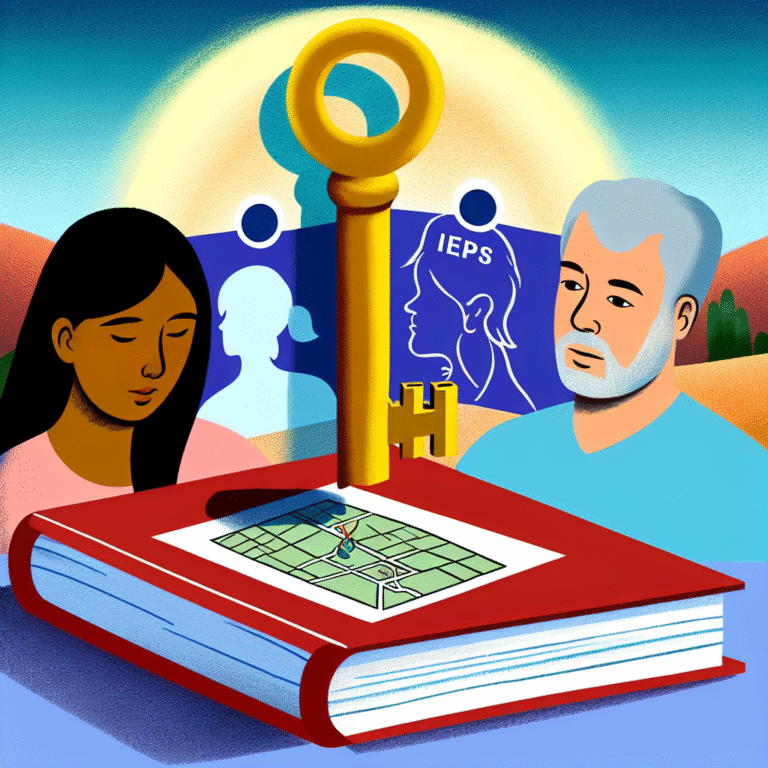
Resilience in Action: Essential Tips for Enhancing Self-Worth in Children with Learning Differences
Introduction
In a world that often champions uniformity and smooth-sailing academic journeys, children with learning differences face various challenges that can significantly impact their self-worth. An essential element in nurturing these children lies in fostering resilience. Resilience in Action: Tips for Enhancing Self-Worth in Children with Learning Differences clearly outlines the transformative power of resilience and self-worth and how they can be integrated into every child’s learning experience.
As we delve into this topic, we will discuss practical methods, real-world applications, and insights into how parents, educators, and caregivers can support children with learning differences. The importance of enhancing self-worth through resilience is not just a noble goal; it’s a necessity that can reshape a child’s future.
Understanding Learning Differences
Before diving into resilience-building techniques, it’s vital to understand what learning differences entail. These can include dyslexia, ADHD, autism spectrum disorders, and other cognitive variations that affect how a child processes information. For instance, according to the National Center for Learning Disabilities, approximately 1 in 5 children in the U.S. has learning differences.
Case Study: Emma’s Journey
Let’s take Emma, a nine-year-old diagnosed with dyslexia. Emma often felt inferior compared to her peers, leading to a reluctance to participate in classroom activities. Her story is not uncommon; many children like her struggle with feelings of inadequacy.
Analysis of Emma’s Case
Emma’s reluctance stems from her feeling different in a highly competitive environment where success is measured through standardized assessments. Her story underscores the importance of resilience in nurturing self-worth. Enhancing the self-worth of children with learning differences requires a fundamental appreciation of their uniqueness.
The Role of Resilience
Resilience is often defined as the ability to bounce back from adversity. For children with learning differences, this characteristic can empower them to navigate challenges and setbacks effectively.
Strategies to Foster Resilience
Cultivate a Growth Mindset: Encouraging a growth mindset helps children view challenges as opportunities for learning. Praise effort rather than innate ability. Use phrases like "You worked so hard on that project!" instead of "You’re so smart!"
Create Safe Learning Environments: A nurturing atmosphere where mistakes are seen as part of the learning process allows children to feel secure expressing themselves.
Incorporate Skills Training: Teaching problem-solving and coping strategies equips children with tools to tackle challenges head-on.
Encourage Self-Reflection: Ask children to reflect on their learning experiences and assess what worked and what didn’t. This promotes self-awareness and growth.
- Set Realistic Goals: Help children set achievable goals, fostering a sense of accomplishment when they meet these milestones.
Table 1: Techniques for Building Resilience
| Technique | Description | Benefit |
|---|---|---|
| Growth Mindset | Teach the concept that abilities can develop | Promotes motivation |
| Safe Learning Environment | Nurturing space for expression | Increases confidence |
| Skills Training | Problem-solving workshops | Empowers decision-making |
| Self-Reflection | Guide children to analyze their learning | Enhances self-awareness |
| Realistic Goals | Help set and achieve obtainable targets | Fosters a sense of achievement |
Enhancing Self-Worth
Self-worth is integral to a child’s emotional and social development. For children with learning differences, enhancing self-worth can be an ongoing journey that requires consistent support and encouragement.
Methods to Enhance Self-Worth
Positive Reinforcement: Regularly celebrate achievements, no matter how small. Positive reinforcement builds a sense of worth.
Promote Autonomy: Encourage independence by allowing children to make decisions related to their learning.
Value Their Unique Strengths: Help children identify personal strengths and interests outside of academics. Celebrating talents like art, music, or sports fosters a sense of identity.
Involve Peer Support: Creating opportunities for peer interactions can reduce feelings of isolation and enhance social skills.
- Create Support Networks: Guidance from caring adults, mentors, and peers creates a robust support system for the child.
Case Study: Alex’s Transformation
Alex, a twelve-year-old with ADHD, had often been overlooked in group settings. By emphasizing his love for basketball and encouraging participation in a team, Alex’s self-worth blossomed. He found a supportive community, which reinforced his value as a team player.
Analysis of Alex’s Case
Alex’s situation illustrates how recognizing and nurturing a child’s unique strengths can substantially enhance self-worth. Encouraging participation in extracurricular activities plays a vital role in establishing social connections and boosting self-esteem.
Building a Supportive Home Environment
Parents and caregivers play a crucial role in a child’s development of resilience and self-worth. Here are some actionable steps for homes to foster positive self-images in children with learning differences:
Practical Tips for Parents
Open Lines of Communication: Encourage your child to express feelings, concerns, and experiences without fear of judgment.
Model Resilience: Share your personal stories of overcoming challenges, demonstrating that struggles and setbacks are part of life.
Create Routine: Establishing a daily routine builds security and stability, essential for children with learning differences.
Limit Comparisons: Focus on individual progress rather than comparing to peers. Each child’s journey is unique.
- Encourage Problem-Solving: Allow children to face challenges on their own, providing guidance only when necessary.
Table 2: Parental Support Strategies
| Strategy | Effect on Self-Worth | Implementation Tips |
|---|---|---|
| Open Communication | Builds trust | Schedule regular check-ins |
| Modeling Resilience | Teaches coping skills | Share personal stories |
| Routine Establishment | Provides security | Consistent schedules |
| Limit Comparisons | Reduces pressures | Celebrate individual growth |
| Encourage Problem-Solving | Develops independence | Allow child to navigate challenges |
Educator’s Role in Enhancing Self-Worth
Teachers, too, play a pivotal role in fostering resilience and self-worth in children with learning differences. Here are effective strategies for educators:
Professional Development: Engage in training courses focused on learning differences to better understand how to support affected students.
Differentiated Instruction: Tailor teaching methods to accommodate varied learning styles, ensuring that all children feel included.
Peer Collaboration: Encourage group work where diverse strengths contribute to a project. This promotes inclusion and teamwork.
Constructive Feedback: Provide feedback that focuses on improvement and growth, emphasizing effort instead of results.
- Resource Awareness: Stay informed about resources, including counseling and tutoring, to offer extra support to students needing it.
Case Study: Mrs. Thompson’s Classroom
Mrs. Thompson implemented strategies to accommodate her students with learning differences, leading to not only better academic performance but a visible increase in self-worth among her students.
Analysis of Mrs. Thompson’s Approach
Mrs. Thompson’s emphasis on differentiated instruction and peer collaboration exemplifies how educators can create inclusive environments that bolster student self-esteem. It highlights the idea that resilience is best cultivated within supportive frameworks.
Conclusion
Building resilience and enhancing self-worth in children with learning differences is not just about addressing academic needs; it involves a holistic approach to nurturing emotional, social, and personal growth. Resilience in Action: Tips for Enhancing Self-Worth in Children with Learning Differences provides a roadmap filled with actionable strategies for parents, educators, and caregivers. By cultivating resilience and nurturing self-worth, we create a brighter future for all children, empowering them to embrace their unique journeys joyfully and confidently.
FAQs
1. What are learning differences?
Learning differences refer to various cognitive conditions that affect how individuals process information, often impacting reading, writing, or mathematical skills.
2. How can I help my child build resilience?
You can help your child build resilience by fostering a growth mindset, creating a safe learning environment, and teaching problem-solving skills.
3. Why is self-worth important for children with learning differences?
Self-worth is crucial as it influences a child’s overall emotional well-being, motivation, and ability to tackle challenges effectively.
4. What role do peers play in enhancing self-worth?
Good peer relationships foster inclusion and social skills, allowing children to feel valued and understood, which greatly enhances their self-worth.
5. How can educators support students with learning differences?
Educators can support students through differentiated instruction, constructive feedback, and creating inclusive classroom environments that recognize diverse strengths.
By implementing these strategies and principles, we can take active steps to reinforce resilience and promote self-worth in the lives of children with learning differences. Every effort counts, and every child deserves the chance to flourish!






